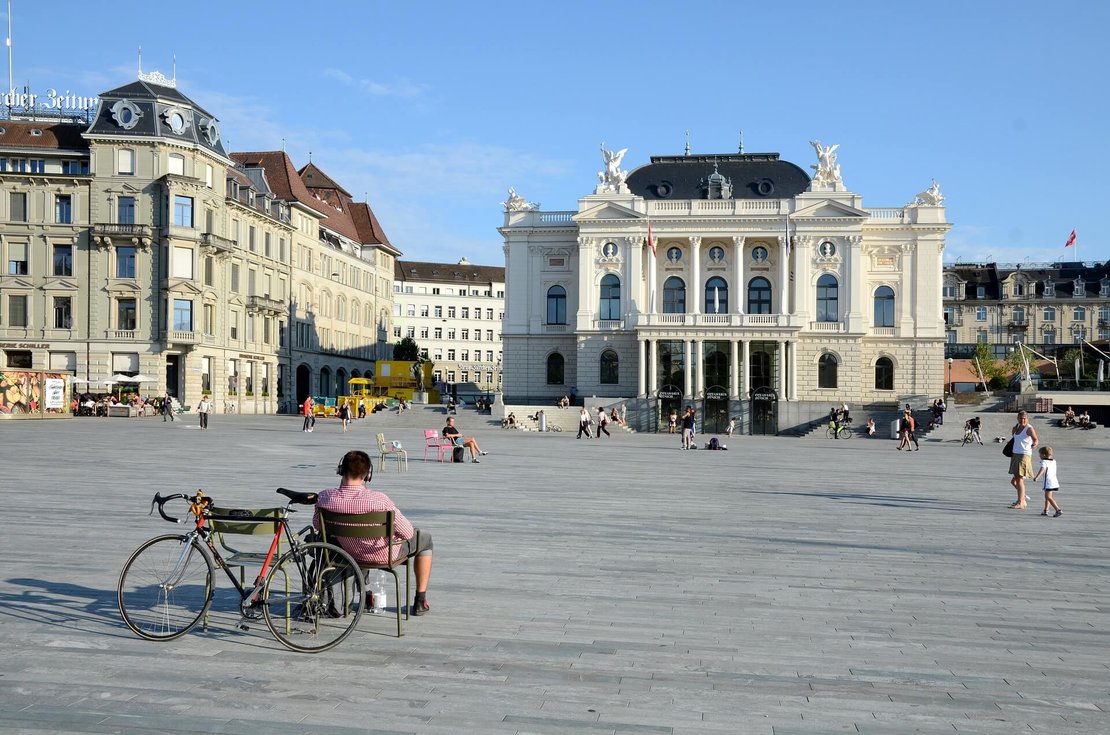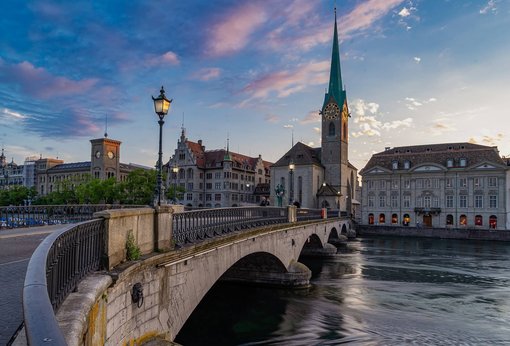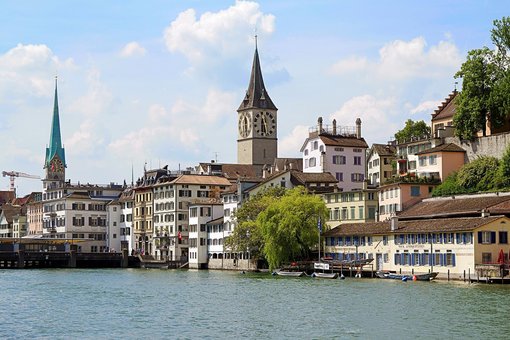Swiss Culture: Traditions, Clothing, and Everything in Between

Switzerland is a nation with a rich and vibrant cultural tradition. In addition to the impact of the 26 cantons on Swiss culture, its geographic location between various nations, including Germany, Italy, France, Austria, and Liechtenstein, has influenced its cultural diversity.
Language
German, French, Italian, and Romansch are the country's four official national languages. Why are four languages spoken in Switzerland? The most notable element is that Switzerland has never been ethnically homogeneous. The second important factor is the area’s natural borders, created by mountains, rivers, and woods.
Here is a table of languages spoken in Switzerland:
| Language | Percentage |
|---|---|
| German | 62.6% |
| French | 22.9% |
| Italian | 8.2% |
| Romansh | 0.5% |
Social Customs
Friends greet one another with three cheek kisses, as opposed to the Swiss who shake hands upon introduction. When you enter and exit a store, you should smile at the workers. Punctuality is important, and arriving late is rude. Neighbors treat one another with respect in Switzerland.
For example, many cities have designated party houses in the woods where people can host events, so they don't cause noise in their homes and perhaps disturb their neighbors.
Here are some examples of Swiss social customs:
- Don’t litter. Littering and leaving trash on the ground are forbidden in Swiss culture. It’s also illegal.
- Respect older people. In Switzerland, elders are held in high regard. As a result, Swiss citizens expect the same behavior from you and other foreigners.
- Don’t chew gum. If you want to chew gum, try not to in public. It’s considered irritable and rude by the Swiss.
- Be quiet. The Swiss dislike loud people. While in public or in private settings, such as on public transportation, you should keep quiet.
- Punctuality. When you’re invited somewhere you should be on time, or five minutes early.
Read more: What are Swiss people like?
Religion
The majority of the population of Switzerland is Christian. Together with Roman Catholics and Reformed Evangelicals, there are also Orthodox Christians and members of free churches. Jewish, Buddhist, Muslim, Hindu, Sikh, and other religious communities can be found in Switzerland.
| Religion | Percentage |
|---|---|
| Roman Catholism | 34.4% |
| Swiss Protestantism | 22.5% |
| Orthodox Christians | 2.6% |
| Other Protestants | 2.7% |
| Muslim | 5.4% |
| Eastern or Oriental Orthodoxy | 2.6% |
| Unaffiliated | 29.4% |
Cuisine
In most of the world, the term "Swiss cuisine" typically refers to just two ingredients: cheese and chocolate. However, there is much more to the country's cuisine than just these two essential components. Swiss food is actually diversified. With a few exceptions, most Swiss areas have borrowed traditional dishes from the neighboring nations that share linguistic ties, creating distinctly regional cuisines.
Here are a few traditional Swiss foods:
- Fondue. Fondue is a Swiss cheese dish. When eating fondue, bread is dipped into the melted cheese with long-stemmed forks.
- Malakoff. A Malakoff is a fried cheese ball most frequently found in Western Switzerland. Usually served as a first course, the Malakoff is best appreciated with cornichons, pickled onions, and mustard.
- Älplermagronen (Alpine Macaroni). This is a rustic Swiss dish. The dish's named this way because the ingredients were once used to feed shepherds who were watching their cows as they grazed on Alp pastures. This Swiss staple has several versions, but the main ingredients are macaroni noodles, cheese, onions, and potatoes.
- Saffron Risotto. The Swiss saffron is among the best and most expensive in the world. Because the stigma of several crocus types and the dark red saffron strands are hand-picked, the saffron risotto is in high demand. The Valais canton is home to cultivating this special ingredient, which the Swiss use effectively.
- Polenta (Cornmeal). Polenta is a dish made from yellow cornmeal that is mashed into a delicious mash over low heat. This meal is a staple of Ticino's peasant cuisine, along with risotto and chestnuts.
Clothing
The traditional clothing of Switzerland is adaptive and may differ greatly or barely from canton to canton. The phrase "national costume" actually refers to the traditional outfits that peasants wore, which were specific to the region's surroundings. The aristocracy of Switzerland dressed in a manner that was not notably different from that of the nobility of the nearby nations.
Swiss men have historically dressed casually and routinely throughout the country. Men who live in hilly places prefer leather shorts since they facilitate mobility while walking, climbing, or hunting. In the lowland areas, men wear breeches or pants with woolen tights or stockings, a cap, and shirts with long sleeved coats.
Swiss women frequently wear puffed sleeves and colourful skirts, which are quite feminine. Beautiful headpieces, laced aprons, bonnets, and embroidered bags complement the outfit. Another outfit includes an apron, a full-length skirt, and a corset. These outfits are accessorized with stylish, vibrant jewelry.
Architecture
Architecture in Switzerland uses up a lot of particularly scenic beauty and natural picturesqueness, especially when compared to other regions of Europe where manufactured landscapes are typical. Switzerland has a rich and enduring architectural legacy that includes everything from mythical castles to powerful castles, renaissance chateaux, and fashionable structures.
The variety of Swiss architecture, which is spiced with history, ease, elegance, and customs, is what makes it so interesting and distinctive. The traditions of the four nations had a significant impact on the nation's architecture. The northern region of the country is influenced by the Romans and Italians, whereas the southern and eastern regions are dominated by German and French styles.
Music and Dancing
Yodeling, Ländler music, and the Alphorn are all part of the collective imagination that is known as Swiss folk music. The Alphorn, which is the traditional musical instrument that Switzerland is known for, is among the most well-known musical instruments, along with the "Schwyzerörgeli" (accordion), violin, bass violin, clarinet, and others.
Yodeling, which originated in the Alps and involves changing your voice's natural low pitch to a high tone of a falsetto, is a type of music that is distinctive to Switzerland. In the mountains, shepherds mostly used it to communicate with one another. Yodeling festivals continue to be organized today, even though you might believe this music genre is no longer relevant.
In the past, Switzerland only permitted public dancing on rare occasions. But, following World War II, restrictions were greatly eased, and dancing became a well-liked hobby in Switzerland. The waltz, foxtrot, and polka are among the more traditional dances that the Swiss enjoy as well as more modern dance styles like breakdancing, salsa, and rock and roll. In order to preserve the folk dances of the country, the Trachtenvereine organizations perform these dances at folk festivals and other cultural gatherings.
Celebrations
Switzerland is a federation of 26 cantons, each with considerable autonomy in establishing its own laws and regulations, including those governing public holidays. Although there are certain national holidays, each canton determines the most of public holidays.
Here are a few significant dates in Switzerland:
- New Year’s Day (January 1).
- Easter Monday (April 10).
- Swiss National Day (August 1).
- Christmas Day (December 25).
- Ascension Day (May 18).
- Thanksgiving (September 17).
Sports
Sports are an active element of daily life for most Swiss people. Football and ice hockey are the most popular sports in the country. Switzerland hosted several important international athletic events, including the Winter Olympics in 1928 and 1948 as well as the FIFA World Cup in 1954. Winter sports facilities in the country are a major attraction for travelers and sportsmen from around the globe.
Among the popular sports practiced in Switzerland are curling, ski jumping, competitive sledding, and alpine skiing. Mountain climbers from around the world come to Switzerland to practice their sport. The country features 12 ice hockey clubs that make up the National League and has hosted the Ice Hockey World Championships eleven times as of 2017.


